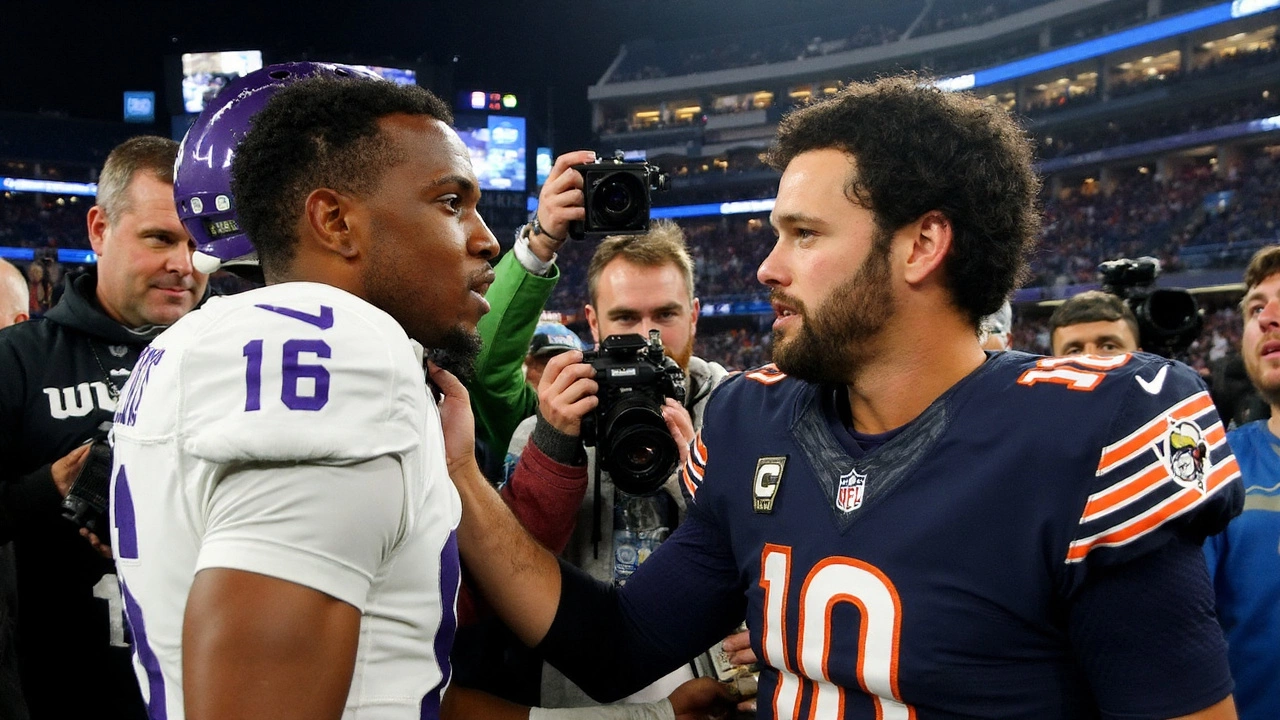A hyped debut turns into a harsh lesson at Soldier Field
The opening day script in Chicago was supposed to be simple: new coach, new energy, and an offense finally built to attack instead of react. Instead, the Bears walked out of Soldier Field with a come-from-ahead loss to the Minnesota Vikings and the uneasy feeling that the same old problems can still ambush a new era. The debut for Ben Johnson—the coach hired for his play-design magic—wasn’t about fireworks. It was about missed chances, shaky execution, and a lead that slipped away.
Johnson arrived on January 21, 2025, as the 18th full-time head coach in the franchise’s 106-year history, carrying the glow of a rising star. In Detroit, his offense was creative, flexible, and brutal on defenses that overplayed tendencies. Chicago paid for that firsthand the last two years, which is part of why hiring him felt like a coup. Sunday’s result didn’t erase the logic of that bet, but it did show how far this roster has to travel to play his brand of football.
The Bears actually got what they needed early: rhythm, tempo, and an edge. Then it slipped. Johnson summed it up bluntly after the game: “You got it moving, got it going, then all of a sudden it starts going backwards.” That wasn’t about one call or one player. It was death by details—penalties before the snap, timing issues in motion, and a fourth-down decision that will live in talk radio purgatory all week.
The numbers behind the sloppiness were hard to ignore. Four false starts in the first half alone short-circuited drives and dragged the offense out of favorable down-and-distance. That kind of self-sabotage is the quiet separator in close games. Every five-yard set-back puts a young quarterback behind schedule and narrows the playbook. You could feel the crowd’s energy turn from anticipation to anxiety as those flags piled up.
Some of that points to cadence and communication. Caleb Williams is in his second NFL season but in his first game running Johnson’s system. New verbiage, new timing, and an aggressive use of motion can stress an offensive line that’s still syncing up its operation. When the ball doesn’t snap when linemen expect, their feet get noisy. The Bears will grind this in practice with tempo periods, hard counts, and loud music blasting to stress-test the timing. It’s fixable, but it takes reps.
And then there was the fourth-and-three at the Minnesota 23. Go for the throat, or take the points? Johnson kept the offense on the field, and the play went nowhere. The choice matched his offensive DNA—aggressive, willing to live on the margins—but context matters. In Week 1, when your line is jumpy and your quarterback is still calibrating the system, there’s a fair case to bank the field goal. Most modern analytics lean toward aggression on fourth-and-short in plus territory, but those same models assume clean execution. Chicago didn’t have that Sunday.
None of this means the play-calling was timid. You could see the skeleton of what Johnson wants this offense to be: motion to create leverage, condensed formations to force communication, and play-action to stress linebackers. The opening drives hinted at that. Then Minnesota adjusted. The Vikings have leaned into a pressure-heavy identity under a blitz-minded defensive approach, and they made Williams prove he could be both patient and precise when the picture changed post-snap. That’s a tough ask when protection is jittery and the cadence is off by a beat.
Williams owned his part afterward. “It’s a growing process,” he said. “It’s going to keep growing from here. It’s a start.” That’s not spin. Quarterbacks in year two, running their first game in a new system, often ride a roller coaster of clean reads and late throws. The Vikings threw a lot at him: simulated pressures, rotation late in the down, and changing leverage from the slot. When that happens, you need easy buttons—quick-game answers, hot routes that actually get thrown, and a run game that slows down the rush. Chicago hit those pockets in spurts, not as a theme.
Another piece: situational football. You could feel the Bears pressing after penalties turned second-and-manageable into second-and-long. That’s where the game within the game lives. Johnson has built his reputation on sequencing—calling plays not just for yardage, but to set up the call two, three snaps later. It’s hard to spin that web when you’re behind the chains and the defense knows your options shrink. A Week 1 offense almost always looks better when it stays on schedule. Chicago didn’t.
Inside the building, Johnson had set two simple summer goals: harden the group’s mental toughness and forge an offense that feels connected, not siloed. The opener backed up the need for both. Mental toughness isn’t just attitude; it’s execution under stress. It’s avoiding the flinch when noise rises and a drive teeters. Chemistry isn’t just dinners and team-building. It’s a shared clock between quarterback, center, and motion man so the ball snaps on the same breath, every time.

What the Bears need to fix first—and how fast they can do it
The Bears don’t need a philosophical reboot. They need operational clarity. Johnson’s offense has answers baked in; the Bears need to reach them faster. Here’s where the fix starts:
- Cadence and communication: Agree on a baseline cadence for high-leverage downs. If the operation is late, simplify the rhythm. Use more “on-one” snaps to regain confidence before layering checks and motions back in.
- Pre-snap discipline: Penalized lines often improve quickly with focused periods—five straight snaps without a flinch or the whole unit runs. It sounds simple, but repetition under pressure cleans this up.
- Protection rules vs pressure: Minnesota forced Chicago to declare protections. The Bears need to tighten their rules for who’s hot, who’s sight-adjusting, and what the shortcut throws are when the look gets muddy.
- Situational choices: Fourth-and-three in plus territory is a judgment call. Early in a new regime, banking points can calm a sideline. Chicago can stay aggressive while choosing spots based on game flow.
- Red-zone and fringe execution: Inside the 25, space collapses and timing matters most. Condense the call sheet to the plays the group runs best, not the ones that look coolest on the tablet.
Personnel continuity will help. Offensive lines don’t gel on a whiteboard. They find their rhythm through shared sets, the same calls, the same center-quarterback communication. If the Bears can keep their five together and avoid musical chairs, the cadence and jumpiness settle. That alone can flip two or three drives a week.
There’s also the simple fact that defenses are often ahead of offenses in Week 1. They play faster with less to think about. Offenses need timing, trust, and a feel for how a concept breathes against live bullets. You could see Johnson trying to find the sweet spot between his system’s ambition and what the group could handle in real time. By the fourth quarter, Chicago felt reactive, not dictating.
If you’re looking for the silver lining, it’s that the Bears’ early success wasn’t an accident. The design got guys open, the quarterback found the first read, and the run game had teeth when the counts were right. Those are signs the system fits. The challenge is smoothing out the valleys so the floor rises. Explosive plays don’t matter if your offense is constantly stuck on second-and-15 because of a twitch up front.
Zoom out, and this loss fits a familiar NFL pattern. New staffs often stub their toe in the opener. The fixes happen faster than people expect when the issues are operational rather than talent-based. That’s the Bears’ bet: that the right teacher can turn hard lessons into cleaner Sundays, quickly.
Historically, Chicago knows how fragile Week 1 can be. This city has seen hot starts dissolve and slow starts become something sturdier by Halloween. The Vikings are a divisional measuring stick; you feel those losses longer because they count twice—on the field and in the standings. But they also force clarity. You can’t dodge your soft spots after your rival exposes them.
Johnson’s voice after the game carried equal parts frustration and resolve. That matters. Players can smell panic. They buy into plans that don’t overreact but still move fast. Expect the practice week to tilt toward tempo, cadence work, and blitz pickup. Expect the call sheet to lean into quick answers early, building confidence before hunting for chunk plays off play-action.
Williams’ role in the turnaround is straightforward: protect the ball, speed up his eyes against pressure, and take the easy money. He’s seen complex coverages before; now it’s about finding the throw that keeps the offense ahead of schedule. On third-and-medium, trust the concept. On first down, hit the check if the shot’s not clean. Chicago doesn’t need hero ball to get right. It needs clean ball.
For fans, the frustration is fair. You don’t hire an offensive star and dream of moral victories. But Week 1 also isn’t a verdict. The Bears saw the gap between what they want to be and what they are. That gap is mostly technical. Clean the cadence. Settle the line. Choose aggression with a purpose, not as a reflex. When they do, the scheme that made Johnson a headline name will show up for four quarters, not two.
That’s the work in front of them now: turn a harsh lesson into a springboard. The next time a lead appears, make it feel inevitable, not fragile. That’s how a debut disappointment becomes a footnote in a longer story instead of the headline.


